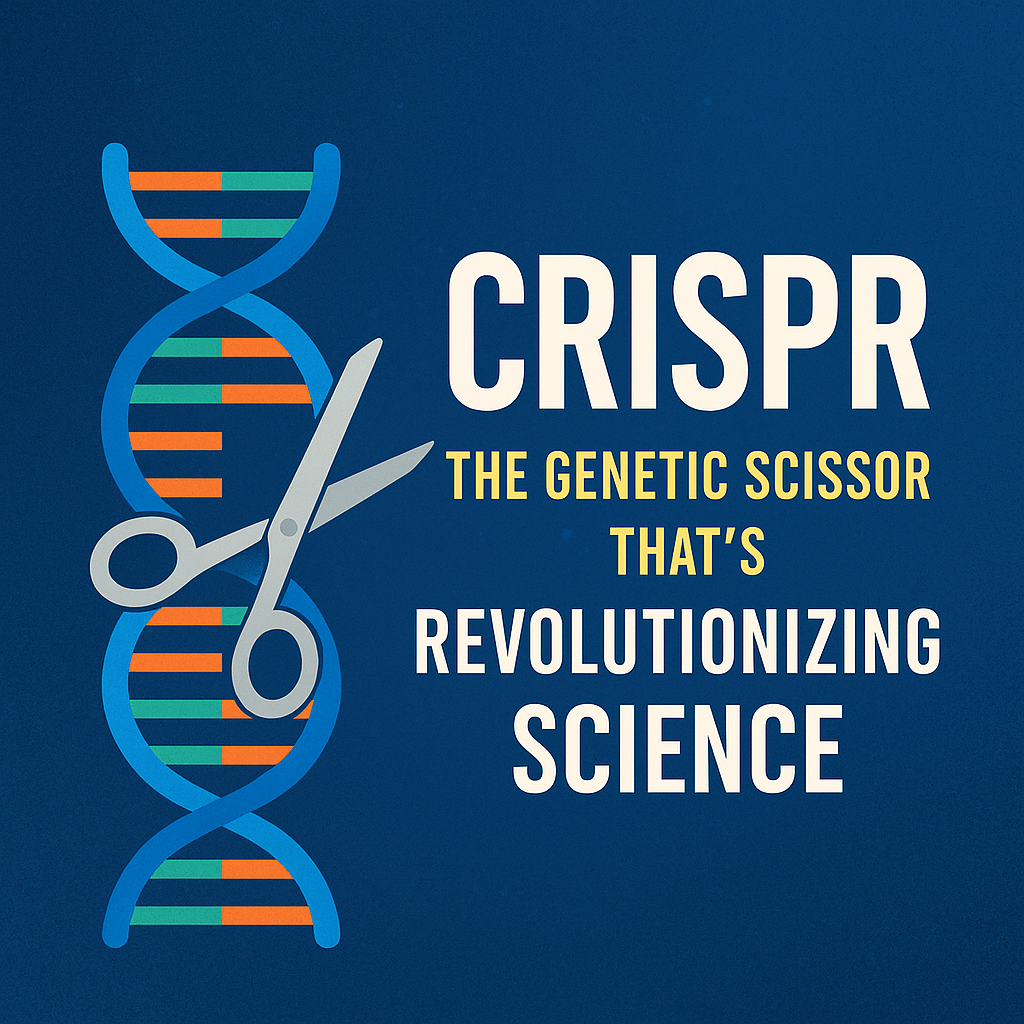Physical Address
304 North Cardinal St.
Dorchester Center, MA 02124
Physical Address
304 North Cardinal St.
Dorchester Center, MA 02124

Imagine being able to edit genes like you edit text in Word — cutting, copying, and pasting. That’s exactly what CRISPR lets scientists do. CRISPR is one of the most exciting scientific breakthroughs of the 21st century. It’s changing the way we treat diseases, grow crops, and even think about the future of evolution. But how does it work? And why is everyone calling it the “genetic scissor”? Let’s break it down.
CRISPR stands for:
Clustered Regularly Interspaced Short Palindromic Repeats
It’s a part of DNA found in bacteria, originally used by them as an immune system to fight viruses.
Scientists discovered that this system could be repurposed to cut and edit genes in any organism — plants, animals, even humans.
The key tool here is a protein called Cas9, which acts like molecular scissors.
Think of it like using “Find & Replace” in a Word doc — but for genes.
CRISPR has also raised important moral questions:
In 2018, Chinese scientist He Jiankui shocked the world by creating the first gene-edited babies — raising alarm bells in the global scientific community.
That’s why most countries have strict regulations, especially around human trials.
In 2020, Jennifer Doudna and Emmanuelle Charpentier received the Nobel Prize in Chemistry for their work on CRISPR-Cas9 — a historic moment for women in science and for biotechnology.
| Term | Meaning |
|---|---|
| CRISPR | DNA sequences used to edit genes |
| Cas9 | Protein that cuts DNA |
| gRNA | Guide RNA that finds the gene |
| Gene editing | Changing specific parts of DNA |
CRISPR isn’t just a buzzword — it’s a powerful tool that could cure diseases, fight climate change, and reshape agriculture. But it also brings challenges, especially ethical ones, that we must face carefully.
Curious minds should follow CRISPR closely — it’s rewriting the story of life itself.
Q. Discuss the potential of CRISPR-Cas9 gene-editing technology in addressing genetic disorders and improving agricultural practices in India. What are the ethical and regulatory challenges associated with its application?
(Answer in 250 words)
📥 Subscribe to get weekly explainers like this
💬 Have a question? Drop it in the comments below
🔗 Share this with someone who loves science!